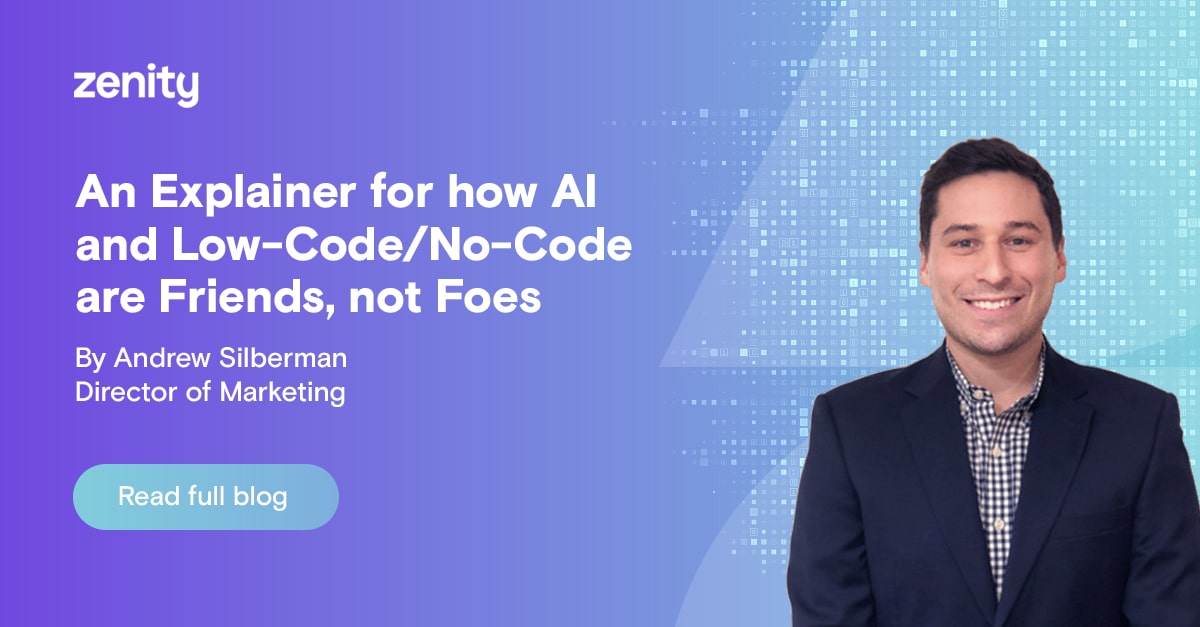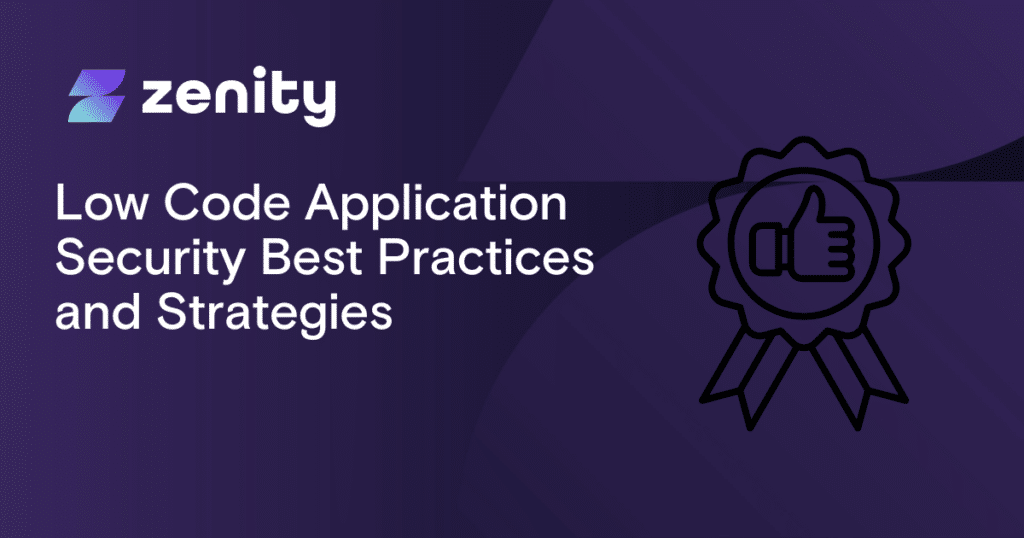An Explainer for how AI and Low-Code/No-Code are Friends, not Foes

Introduction
In today’s rapidly evolving digital landscape, organizations not only seek out, but need to harness the power of emerging technologies to stay ahead of the competition. Two of the most promising trends in the tech world are generative AI and low-code/no-code development. Generative AI, in particular, has generated the majority of the headlines, with seemingly infinite use cases to spur productivity for end users and business. Low-code/no-code development is also an increasingly popular method to enable productivity, with professional and citizen developers able to create applications, automations, and more, fast.
Individually, AI and low-code/no-code development offer distinct advantages that most businesses are trying to harness separately, but what happens when these two forces of nature collide?
The Clash: Where Conflict Arises
At first glance, generative AI and low-code no-code development might appear to be at odds with each other. Generative AI is associated with advanced algorithms and complex models, while low-code/no-code development emphasizes simplicity and accessibility. The clash arises from the perception that generative AI might conquer the world by consuming everything in its path, but as we have already started to see, generative AI is likely to merge within low-code/no-code development, to make application and automation development even easier and faster.
The Perfect Merge: Better Together
Beneath the surface, generative AI and low-code no-code development share a fundamental goal: enabling individuals and businesses to leverage technology to their advantage. The true potential lies in their harmonious integration, where their respective strengths can be harnessed for exponential growth.
Imagine a low-code/no-code development platform enhanced with generative AI capabilities. In fact, you do not have to think too hard, as Microsoft Power Platform has already integrated ChatGPT into the platform, with the announcement of CoPilot. Developers and business users alike can leverage AI-generated code snippets, data augmentation, and smart suggestions, automating repetitive tasks and boosting productivity. This fusion eliminates the need for extensive coding expertise while providing powerful AI-driven enhancements, making the platform even more accessible and efficient.
Moreover, generative AI can complement low-code/no-code platforms by automating content creation and personalization. Marketers can leverage AI-generated content to create engaging copy, dynamic designs, and hyper-personalized experiences effortlessly. The result is a seamless combination of human creativity and machine-generated enhancements, unlocking new realms of innovation. However, as productivity is unlocked, security leaders must be extremely vigilant to make sure that this avalanche of development is not exposing the organization to undue risks.
Potential Security Challenges
- Data Privacy and Compliance. Low-code/no-code development platforms often result in people creating applications and automations that handle and proces sensitive data, including personal information, financial records, and intellectual property. When combined with AI capabilities, the amount and sensitivity of data processed can increase significantly as output increases. Ensuring data privacy and complying with relevant regulations, such as GDPR, HIPAA, or CCPA, becomes even more critical. Implementing encryption, access controls, and secure data storage mechanisms is vital to protect user data and maintain regulatory compliance.
- Malicious Use of AI. Generative AI, when integrated into low-code/no-code platforms, can be misused by bad actors, unknowing insiders, and more. Adversaries may attempt to exploit AI capabilities to automate attacks, develop sophisticated malware, or bypass security measures. These attacks can easily target all the applications that are created using low-code/no-code platforms. To mitigate such risks, robust security testing, including vulnerability assessments, threat modeling, and risk assessment, should be an integral part of development, especially since the traditional software development lifecycle does not exist.
- Lack of Security Expertise. One of the core advantages of low-code/no-code development is its accessibility to citizen developers and individuals with limited coding experience. While this democratization of technology is beneficial, it also means that users may lack in-depth knowledge of cybersecurity best practices. Insufficient understanding of secure coding practices, authentication mechanisms, and secure configuration can lead to vulnerabilities in applications and unintentional exposure of sensitive data. It is essential to provide comprehensive security training and guidance to users of low-code/no-code platforms
- Trustworthiness of AI-Generated Code. AI-powered code generation in low-code/no-code platforms introduces the challenge of ensuring the trustworthiness and reliability of the generated resources. Verifying the quality, security, and adherence to best practices of the AI-generated applications becomes crucial to avoid introducing vulnerabilities into applications. Establishing continuous vulnerability scanning, leveraging low-code/no-code infrastructure entitlement management, scanning for exposed secrets and sensitive data, and implementing guardrails to ensure that end users are creating applications properly can help maintain the integrity of the entire organization.
Conclusion: A Secure Path Forward
Merging generative AI and low-code/no-code development offers immense potential for innovation and productivity. However, it is essential to address the cybersecurity challenges associated with this integration. Collaboration between security experts, AI specialists, and low-code/no-code developers is crucial to identify and mitigate potential vulnerabilities.
As we embark on this transformative journey, it’s crucial to recognize that cybersecurity is not a one-time effort but an ongoing commitment. By staying vigilant, proactive, and adaptable, organizations can harness the benefits of merging AI and low-code/no-code development while safeguarding against emerging cyber threats. However, traditional security tools are not purpose-built for this new frontier of application development.
Zenity is proud to sponsor the OWASP Top 10 for low-code/no-code development, and suggest any organization and security team who is leveraging low-code/no-code development to become familiar with these common attack paths, as they will only become more tenuous as AI is introduced within the low-code/no-code development platforms. We are also hosting a webinar later on June 28th that tackles this very topic, and we will include some useful tips and tricks that your team can implement to secure low-code/no-code development that is aided by generative AI. Register here!



